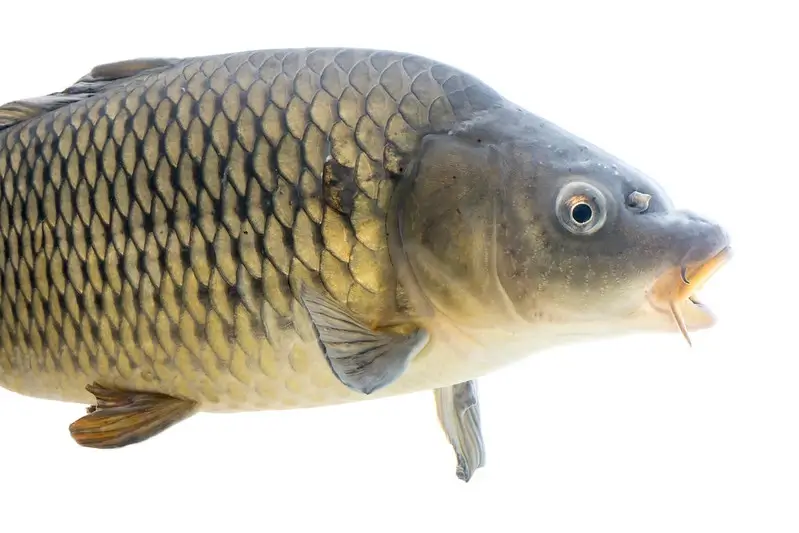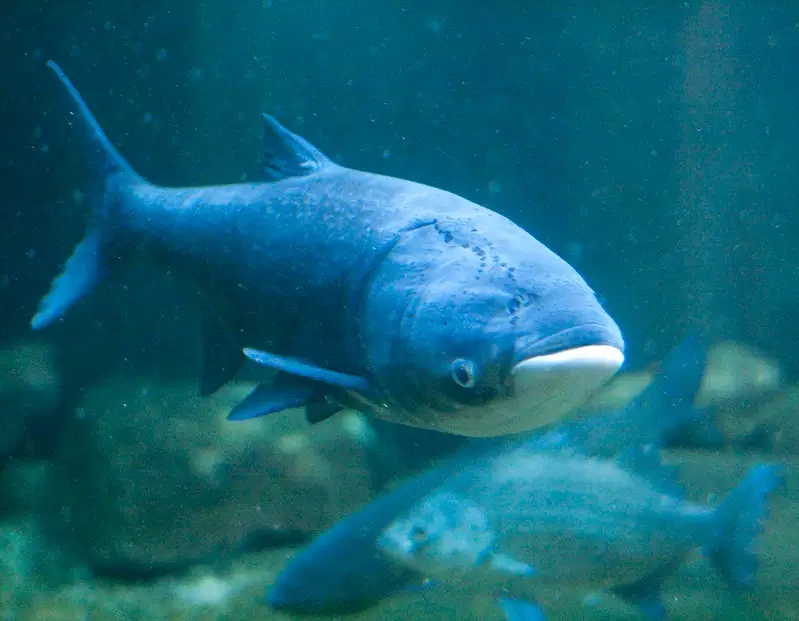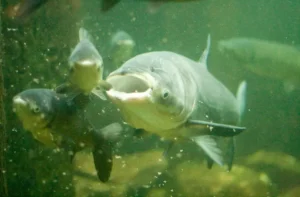The damaging existence of the resilient and aggressive Common Carp population is causing great concern to scientists.
These animals are now being considered a threat to natural and human ecosystems. They reduce water quality, systemic balance, and human health.
However, according to many scientists, the Common Carp is not exactly an Invasive Species. So, why are these slender, giant-looking Carp fish so dangerous? Let us find out.
Why Are Common Carp Invasive Species?

The Common Carp does not fit all the technical criteria of an invasive species and has existed in the North American biome for more than two centuries.
However, there are many ways in which they invade, and marriage affects the biosystems of other native species.
1. Capturing Habitats Belonging to Endangered Species
The Common Carp is a native of Eurasia but has been inhabiting the waters of North America since the 1870s.
The aggressive habits of these fish of capturing and killing plants and animals for food have caused harm to many endangered species. These include small fish, snails, and mussels.
The Common Carp also has a habit of uprooting aquatic plants on the water bed while looking for food. This indiscriminate uprooting has led to the dwindling of endangered plant species.
Additionally, the fish also consume eggs from other endangered fish, thereby revising their numbers even more.
2. Competing for Food Aggressively
The European Carp is driven and aggressive for resources, and they are known to keep feeding till the resources are completely depleted.
It is also true that there are too many Common Carp fish in most water bodies. Female Common Carps lay about 100,000 to 500,000 eggs in each clutch.
Many species of competitor fish lose out on food and mineral resources due to the threat posed by the Common Carp. This has led to a huge imbalance in many local ecosystems.
Must Read: Do Goldfish Blink?
3. Reducing Water Quality
These fish release phosphorus in the water they inhabit, which increases algal growth.
Many other plant species of lower order also start spreading at uncommon rates due to the high levels of phosphorus.
High populations of Common Carp also affect the turbidity of a water body to a substantial extent. These fish are fidgety and highly mobile, causing constant currents in places where such cuteness should not exist.
They occur in shallow lakes and wetlands, where they disturb the pH level of the water. When they overfill a water body, their excrement also increases the salinity of water.
4. Harmful to The Local Food Web
Since they reproduce so rapidly, the Common Carp can easily take a central state in the food web, moving other eventual, bigger species to the periphery.
Common Carp tend to accumulate a lot of toxins in their bodies due to their unhealthy feeding behavior.
Eating wild Common Carp can lead to food poisoning, compromised immunity, and fungal infection in human beings.
Common Carp vs. Asian Carp

The Common Carp and Asian Carp are the two most common Carp subtypes found in the US. There are some surprising differences between these two varieties that have been a subject of discussion among environmentalists for a long.
- The female Common Carp lays a maximum of 500,000 eggs, while the Asian Carp lays 1,000,000,000 eggs at a time.
- Common Carp is one species, but Asian Carp includes a number of species. The ones found most easily in the US include Grass Carp, Bighead Carp, Black Carp, and Silver Carp.
- The Asian Carp has bulbous heads and a streamlined, flat body. They do not have barbells. The Common Carp has whisker-like structures near its mouth and is smaller in size.
- The Common Carp is mostly found throughout the eastern part of the North American continent, while the Asian Carp is centered around the Great Lakes and Mississippi River basin.
The Effect of Common Carp on Deteriorating Human Life
The Common Carp fish impacts human life in surrounding areas on an economic and environmental level.
The Common Carp changes water quality and increases the amount of suspended solids by steering up loose sedimented soil. In some ways, they can also cause soil erosion at a micro scale!
These fish take over the native lands of far more nutritious and economically valuable aquatic species. They even feed on the eggs laid by these fish.
Humans have been desperately trying to keep the Common Carp from expanding its habitat and introducing biotoxins in the hope of slowly reducing their population. This is done to make sure they do not take over subsequent ecosystems that do not belong to them.
Are All Carp in the US Invasive?
None of the Carp species are native to North America, and most of them come from Europe or Asia.
Most Carp species that exist in the US and Canada today were introduced in the 1800s, and there has been a lot of debate as to whether or not they are invasive to local ecosystems anymore.
However, many scientists have also pointed out that one or two centuries are not enough for a new species to assimilate into a foreign environment. One exception is the Asian Carp, which was only introduced around 50 years ago in the 1970s.
Frequently Asked Questions on Why Are Common Carp Invasive Species?
Q1. Where Is the Common Carp Found the Most in The US?
Ans: The Common Carp is found in the easternmost states of the US and southeastern states of Canada. They are also found in some parts of Central USA.
Q2. Why was the Common carp brought to America?
Ans: In the 1880s, a man called Dr. Spencer F. Baird brought the common carp fish to America after he was bombarded with 2000 letters requesting this species for local private ponds. The well-known European fish was also supposed to provide an inexpensive and familiar food to the immigrants.
Q3. What Does the Common Carp Eat?
Ans: The Common Carp is an omnivorous fish that feeds on everything from submerged aquatic plants, insects, microorganisms, and smaller fish. They also contain fish eggs.
The Bottom Line
There are many other measures that can be taken on the individual and municipal levels to bring down their count.
Due to their fast reproductive rate, these Carp have a great influence on the spatial environment of other species, including small aquatic snails and mussels.
There are several ways in which Common Carp can be and must be kept in check within a certain aquatic locality. Barricading, ionic currents, game fishing, etc., are some of them.



